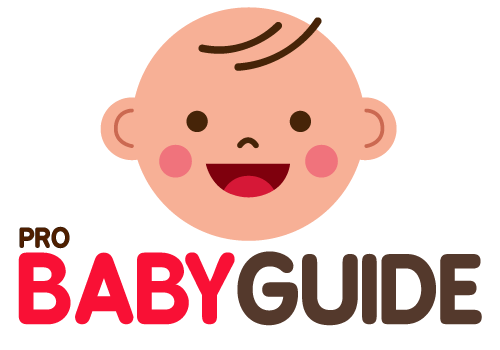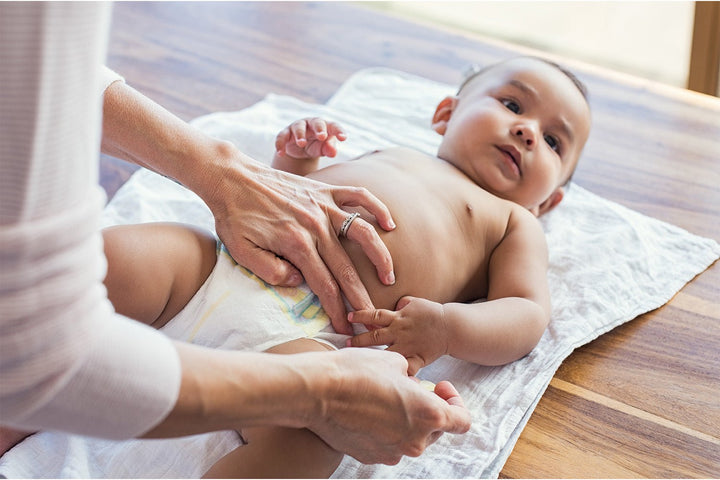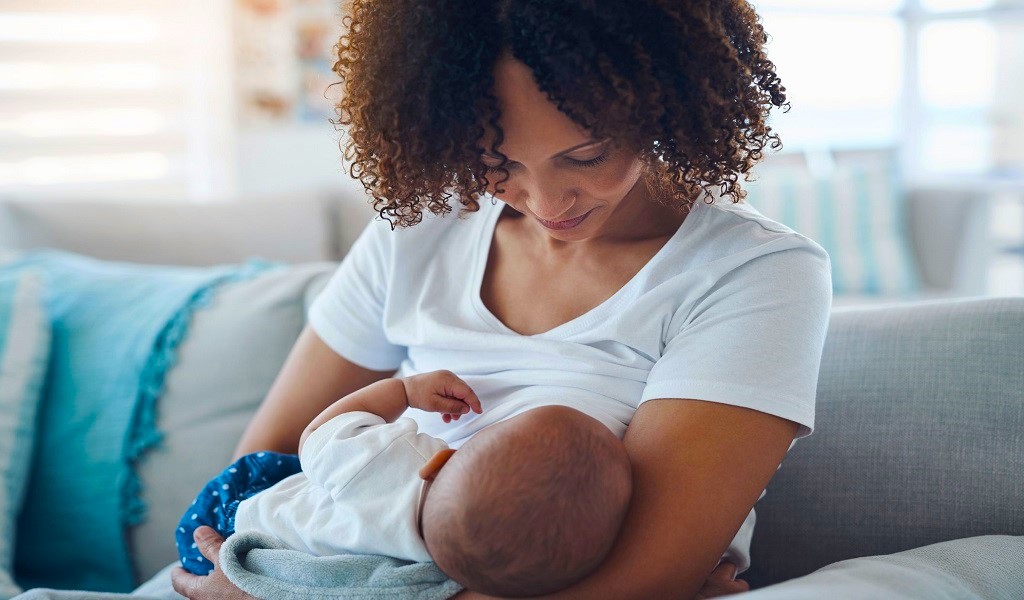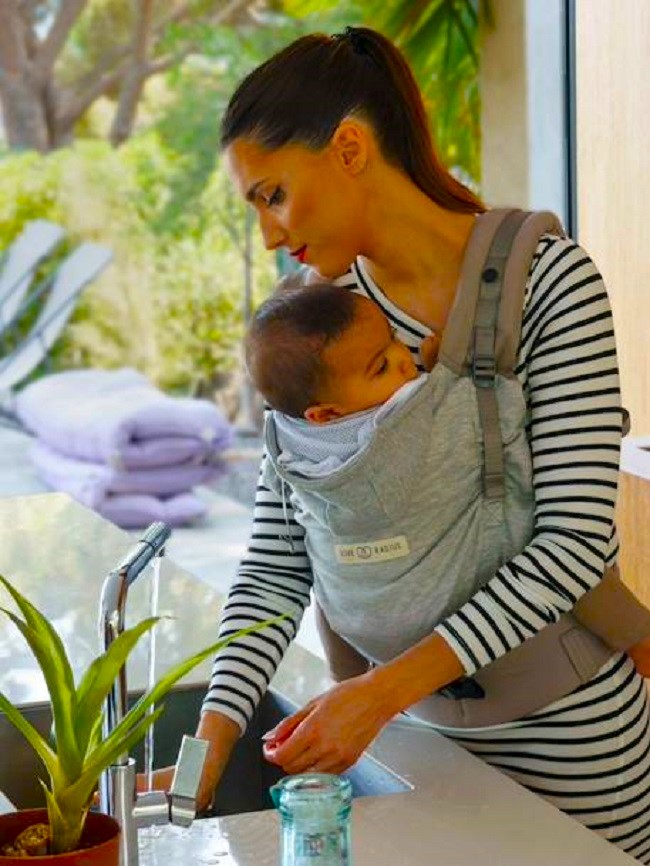Yes, you should change a poopy diaper even if your baby is sleeping to avoid skin irritation. Prompt changing prevents discomfort and potential infections.
Dealing with a diaper dilemma is a common parenting challenge, especially when it disrupts a peacefully snoozing baby. Parents often hesitate to wake their little ones but risk the consequences of leaving a dirty diaper unattended. Every change contributes to your baby’s comfort and health, making it a priority despite the timing.
This introduction lays the foundation for understanding the importance of addressing a dirty diaper promptly and balancing sleep quality with the imperatives of hygiene and skin care. It aims to guide new parents through this delicate balance, ensuring their baby’s well-being remains paramount even during those cherished quiet moments.
Sleep Vs. Cleanliness
Deciding whether to change a sleeping baby’s diaper can pose a tricky dilemma for parents. The debate between sleep and cleanliness often leaves one questioning what takes precedence: allowing their little one to enjoy undisturbed rest or ensuring their comfort and hygiene with a fresh diaper. To make an informed decision, it’s crucial to weigh the risks and benefits on both sides of the spectrum—restful sleep and skin health.
Balancing Sleep Quality With Hygiene For Babies
A baby’s sleep is precious, but so is their skin health. Balancing the two begins with understanding a baby’s sleep patterns and recognizing the signs of a diaper that truly needs changing. An overly soiled or wet diaper can lead to discomfort, potential skin irritation, or even infections such as diaper rash. Assessment is key: If the diaper is only mildly wet and the baby is soundly sleeping, it might be worth waiting until they naturally wake. On the other hand, a fully soiled diaper requires prompt attention to maintain proper hygiene.
Understanding The Importance Of Uninterrupted Sleep
Sleep plays a critical role in a baby’s development. It’s not just a time for rest, but for growth and brain maturation. When babies sleep, they cycle through stages of sleep that are crucial for their development. Continuous, high-quality sleep can contribute to improved learning, attention, and emotional regulation. Making a well-timed decision involves understanding these cycles and discerning whether a diaper change can wait until lighter stages of sleep to minimize disruption.
Note: The decision to change a poopy diaper whilst a baby sleeps hangs on several factors such as the severity of the soiling, any signs of discomfort, or if the baby has frequent issues with diaper rash. Parents and caregivers should consider these factors thoroughly before deciding if sleep or cleanliness should be the priority at any given moment.
Assessing The Need For Change
When it comes to newborn care, one of the most frequently asked questions by new parents revolves around whether to change a baby’s diaper if they’re sound asleep. No one wants to disrupt precious sleep, yet the comfort and hygiene of your little one are paramount. Assessing the Need for Change is critical in making this decision, and with a few key strategies, parents can determine the best course of action.
Identifying Telltale Signs Of Discomfort
Sleep is vital for a baby’s growth and development, making it essential to discern if a diaper change is truly necessary during naptime. Compromising sleep can lead to a cranky baby and a stressful environment. Look for signs of discomfort like restlessness, whining, or a particular smell emanating from the diaper. These indications suggest that the diaper is potentially full, and your baby might be experiencing a degree of discomfort that could warrant a change.
Quick Checks Without Waking The Baby
The art of checking a diaper without waking a baby is a skill that every parent aims to master. Perform a gentle squeeze on the outside of the diaper to check for heaviness – a telling sign of wetness. For the stealthiest approach, consider diapers with wetness indicators that change color when wet. Listening for subtle sounds or checking for any noticeable odors can also serve as a quick, discreet inspection method to decide if a change is imperative.
Remember, factors such as the severity of the mess, the baby’s skin sensitivity, and the risk of diaper rash should guide your decision. Every baby is different, and an attentive check-up will help in maintaining the delicate balance between uninterrupted sleep and your baby’s comfort.
Diaper Duty: Sleeping Baby Edition
Parents often wonder about the delicate dance of changing a poopy diaper while their baby is in the land of nod. On the one hand, you want to maintain hygiene and comfort for your little one, yet on the other, you risk waking up your peaceful sleeper. This dilemma calls for a strategic approach to manage the inevitable: Diaper Duty: Sleeping Baby Edition.
Perfecting the art of a stealthy diaper check can save the day (or rather, the night). Here are some quiet moves to master:
- Use your senses: A slight whiff can often indicate a change is needed without any disturbance.
- Gentle touch: Carefully feel the outside of the diaper for any obvious signs of heaviness or sagging.
- Visual cues: Keep a dim nightlight handy to spot any unusual bulges or discoloration that signal a full diaper.
Tip: To minimize disruptions, practice these checks during regular wakeful moments to refine your technique.
Efficiency is paramount when embarking on a mid-slumber diaper change. Having all supplies ready ensures a swift and smooth process:
- Diapers and wipes: Keep these essentials at arm’s reach.
- Changing pad or mat: Set up a soft, quiet area ahead of time.
- Cream or powder: If necessary, have it uncapped and ready to go.
- Extra clothes: Just in case there’s a need for a full-on wardrobe change.
A well-prepared station mitigates fumbling, reduces noise, and keeps the process as unobtrusive as possible.
| Item | Preparation Tips |
|---|---|
| Diapers | Stack in an easy-to-reach spot. |
| Wipes | Open the pack to avoid rustling noises. |
| Changing Pad/Mat | Keep it unfolded and near the sleeping area. |
| Cream/Powder | Have it unscrewed for quick application. |
| Extra Clothes | Lay them out flat for easy access. |
Both stealthy diaper checks and being prepared are key to navigating Diaper Duty: Sleeping Baby Edition. With tact and preparation, the poopy predicament can be resolved with minimal disruption, letting both baby and parent return to a night of sweet dreams.
:max_bytes(150000):strip_icc()/GettyImages-1322456990-2c70feb0da0d4113988a192ed734661a.jpg)
Credit: www.parents.com
Vital Tips For Changing While Asleep
Mastering the nocturnal nappy change becomes a necessary skill for new parents looking to maintain their baby’s comfort through the night. It can feel like a dilemma: wake a sleeping baby to change a poopy diaper or let them sleep and risk discomfort or a potential rash. Consider these vital tips and tricks to navigate this quiet quest and ensure your baby continues to sleep peacefully.
Should I Change a Poopy Diaper If Baby is Sleeping?: Vital Tips
Should I Change A Poopy Diaper If Baby Is Sleeping?: Vital Tips
A soiled diaper needs attention, even at the risk of waking your little one. An unchanged poopy diaper can cause irritation or a painful rash, disrupting sleep far more than a quick change. Here’s how to make the process seamless and keep those zzz’s on track:
- Prepare your supplies: Gather everything you need beforehand. Wipes, a new diaper, and any creams should be within arm’s reach to minimize movement and noise.
- Dim the lights: Soft lighting will keep your baby sleepy. Use a nightlight or a phone’s flashlight feature instead of the main lights.
- Maintain the warmth: Ensure the room’s temperature is cozy and use a changing pad that doesn’t feel cold to the touch.
- Be efficient, be gentle: Quick, gentle movements will go unnoticed more easily than hurried, jerky ones. Stay calm to project tranquility.
Step-by-step guide to a silent diaper change
Step-by-step Guide To A Silent Diaper Change
- Mute any possible distractions: Silence your phone and turn off any alert notifications that could disturb the peace.
- Positioning: Lay your baby on their back on a comfortable, secure changing area.
- Open the diaper: Gently unfasten the diaper tabs and assess the situation. If there’s a lot of mess, consider using a clean corner of the diaper to remove excess before wiping.
- Clean thoroughly: With as few wipes as necessary, clean your baby delicately. If applicable, apply any diaper cream with a soft touch.
- Slide a clean diaper under: Before completely removing the old one, place the clean diaper underneath to make a quick switch.
- Fasten the new diaper: Secure the new diaper snugly but not too tight. Ensure comfort and prevent leaks.
- Dress and soothe: If your baby stirs, softly soothe them back to sleep as you finish dressing them.
While the need to change a poopy diaper during sleep can be an interruption, it’s essential for your baby’s hygiene and comfort. With these strategies in hand, both parent and child can return to sweet dreams quickly and silently.
Potential Consequences Of Delay
Deciding whether to change a sleeping baby’s soiled diaper can be tricky. Parents often grapple with the fear of waking their little one and disturbing a peaceful sleep, but delaying the inevitable change could lead to unwanted consequences. Understanding the risks associated with putting off a poopy diaper change is crucial for your baby’s comfort and health. Here’s what you need to know.
Risk Of Diaper Rash And Infections
Leaving a poopy diaper on a baby for too long is a recipe for diaper rash and potential infections. The moist, warm, and closed environment is almost heaven for bacteria and yeast to flourish, causing discomfort and health issues for your child. A swift response to a dirty diaper, even at the expense of waking your baby, might thus be a smaller inconvenience compared to the alternative.
Balancing Risk With The Baby’s Sleep Cycle
- Consider the timing: If the diaper has been soiled close to the baby’s usual waking time, it may be worth waiting a little longer. Conversely, if the baby has just fallen asleep, changing the diaper quickly before they enter deep sleep could be less disruptive.
- Observe your baby: Some babies might sleep undisturbed through a diaper change, especially if they’re in the non-REM sleep stage. For others, even slight movements can cause wakefulness.
- Prep for a quick change: Having all your supplies within reach and maintaining a low level of noise and light can help make the diaper change as quick and unobtrusive as possible.
Striking the right balance is key. Be aware of your baby’s comfort and health while also taking into account their need for uninterrupted sleep.
Creating A Soothing Sleep Environment
Navigating the delicate balance between maintaining a baby’s sleep and ensuring their comfort and hygiene can be a challenging aspect of parenting. You might wonder whether to change your baby’s diaper during a peaceful slumber, especially when confronted with a poopy situation. Yet, creating a tranquil sleep space can lead to longer, undisturbed rest periods. Finding the right strategies to minimize nighttime disruptions is key, and this includes both preemptive measures and considering the timing of feedings and the type of diapers used.
Preemptive Measures Before Bedtime
Establishing a pre-sleep routine can be a game-changer when it comes to your infant’s overnight comfort. Consider the following steps:
- Consistent bedtime routine: Bathtub fun followed by gentle massage and soft music can signal to your baby that it’s time for sleep.
- Comfortable diaper fit: Opt for high-absorbency diapers and check that they fit well to prevent leaks and discomfort.
- Fresh diaper before bed: A clean diaper just before bedtime can stave off a potential mid-sleep change.
Adjusting Feeding Schedules And Diaper Materials
Diet and diaper choice significantly affect a baby’s need for diaper changes during the night. Here’s how to tweak both:
| Feeding Adjustments | Diaper Material Choices |
|---|---|
|
|
By fine-tuning feeding schedules and being selective with diaper materials, you ensure that your baby remains dry and comfortable throughout the night. This creates a favorable environment not just for their sleep but also reduces the likelihood of a disruptive, poopy diaper scenario. Always remember, an undisturbed baby equals undisturbed parents! So, invest time in these measures for peaceful nights ahead.
Final Thoughts On Nighttime Changes
When parents are faced with the dilemma of whether to change their baby’s poopy diaper while they’re sleeping, there’s no one-size-fits-all answer. It’s a decision that combines the consideration of potential skin irritation, the quality of the baby’s sleep, and the well-being of the household. Through these final thoughts, we aim to bring together the key factors and nurture the confidence in your parental instincts to make the best decisions for your child, even in the wee hours of the night.
Summarizing The Main Considerations
To ensure a concise overview, here are the main aspects to factor in when debating a nighttime diaper change:
- Diaper quality: High-absorbency diapers can reduce moisture contact with the skin.
- Baby’s skin sensitivity: Some infants may need immediate changes to prevent rashes, while others may not be as affected.
- The severity of the situation: A full, leaking diaper is more pressing than a slightly soiled one.
- Sleep patterns: If your baby wakes up easily and struggles to fall back asleep, it might be worth waiting until they naturally wake up.
- Established routines: Consistency is key in childcare—altering nighttime practices could lead to confusion or disrupted sleep.
Encouraging Trust In Parental Instincts
Ultimately, you know your baby better than anyone else. Every infant is unique, and what works for one may not suit another. Trust in your intuition, is built through day-by-day experiences with your little one. Your instincts will guide you in discerning the most appropriate actions to take, be it a gentle diaper change or letting them sleep undisturbed.
Remember: Parenting is about balance. It’s perfectly okay to adjust your strategies as you learn and grow alongside your baby. Embrace the moments of decision-making at night with confidence, and know that each choice contributes to your evolving parental wisdom.
Frequently Asked Questions For Should I Change A Poopy Diaper If Baby Is Sleeping?
Is It Okay To Not Change A Sleeping Baby’s Diaper?
Generally, it is best to change a poopy diaper even if the baby is sleeping. This helps prevent diaper rash and discomfort. However, if the baby is not bothered and the skin is not irritated, it might be fine to wait until they wake up.
How Often Should You Check A Sleeping Baby’s Diaper?
It’s sensible to check a sleeping baby’s diaper every 2-3 hours. Promptly change it if it’s poopy. For a wet diaper, consider the baby’s sensitivity, diaper absorbency, and risk of diaper rash before deciding whether to wake them.
Can A Poopy Diaper Wake A Baby From Sleep?
Yes, a poopy diaper can wake a baby due to discomfort or irritation. It is often best to change the diaper promptly to ensure the baby remains comfortable and to avoid skin issues like diaper rash.
Will Changing A Diaper Disturb A Baby’s Sleep Pattern?
Changing a diaper may briefly disturb a baby’s sleep, but it’s generally a short interruption. Using a gentle and efficient approach can minimize the disturbance and help your baby return to sleep quickly.
Conclusion
Navigating the delicate dilemma of whether to change your sleeping baby’s diaper isn’t simple. Prioritize your child’s health and comfort while considering sleep quality. Trust your parental instincts and remember, consistent nighttime routines often lead to uninterrupted rest for both you and your little one.




